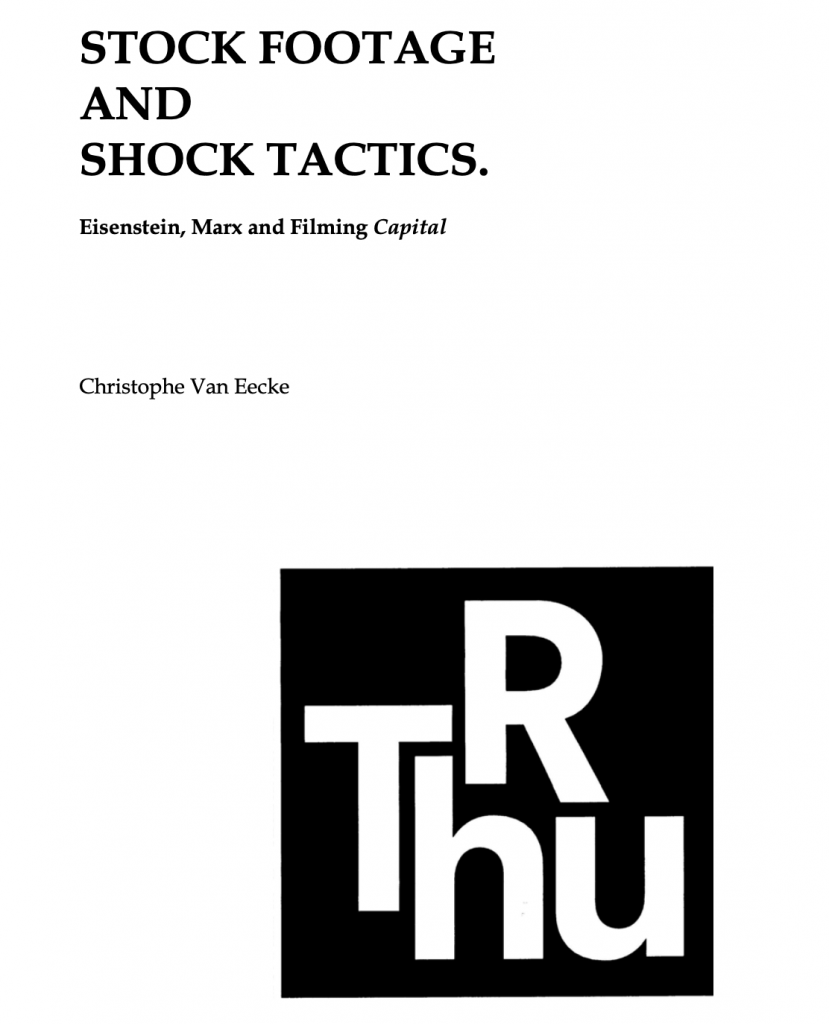Eisenstein, Marx and Filming Capital
The text was originally written for the project ‚B-Sides and Rarities‘ at Lokaal 01 (Breda, Netherlands) in the fall of 2009.
Between 1927 and 1929 Sergei Eisenstein (1898-1948) developed plans to film Karl Marx’s Das Kapital (1867). Nothing came of it, but the project is still regarded as one of the most fascinating unrealised film projects in history. Eighty years later, the German filmmaker and writer Alexander Kluge returned to Eisenstein’s abandoned project and made it the topic of a massive film essay, Nachrichten aus der ideologischen Antike (2008). Kluge does not seek to reconstruct Eisenstein’s unfilmed film. Rather, he investigates the idea of filming Das Kapital, how Eisenstein might have done it, what it meant to Eisenstein and what both such a project and Marx’s book itself can still mean to us today. In a deliberate echo of some of Eisenstein’s methods Kluge doesn’t present us with a linear documentary. Rather, he has created a plotless film that links together points of view and different fragments in a stream of consciousness style. Writing about both Eisenstein’s and Kluge’s films requires a similar approach. The present essay will therefore start with a discussion of Eisenstein’s cinematic poetics and its relation to Das Kapital, and a discussion of Marx’s central tenets in that book. From there we will create a rhizome of associations that will finally make the leap to another unrealised, or at least partially unrealised and dramatically abandoned Eisenstein film, the wonderful Que Viva Mexico! (1930-32), and try to look at it through the eyes of one who has read both Das Kapital and Eisenstein’s earlier films. But the bottom line of this investigation and its occasional detours is a concern with the present: just like Kluge’s film this essay wants to make Das Kapital work for us… Read more in the attached pdf
